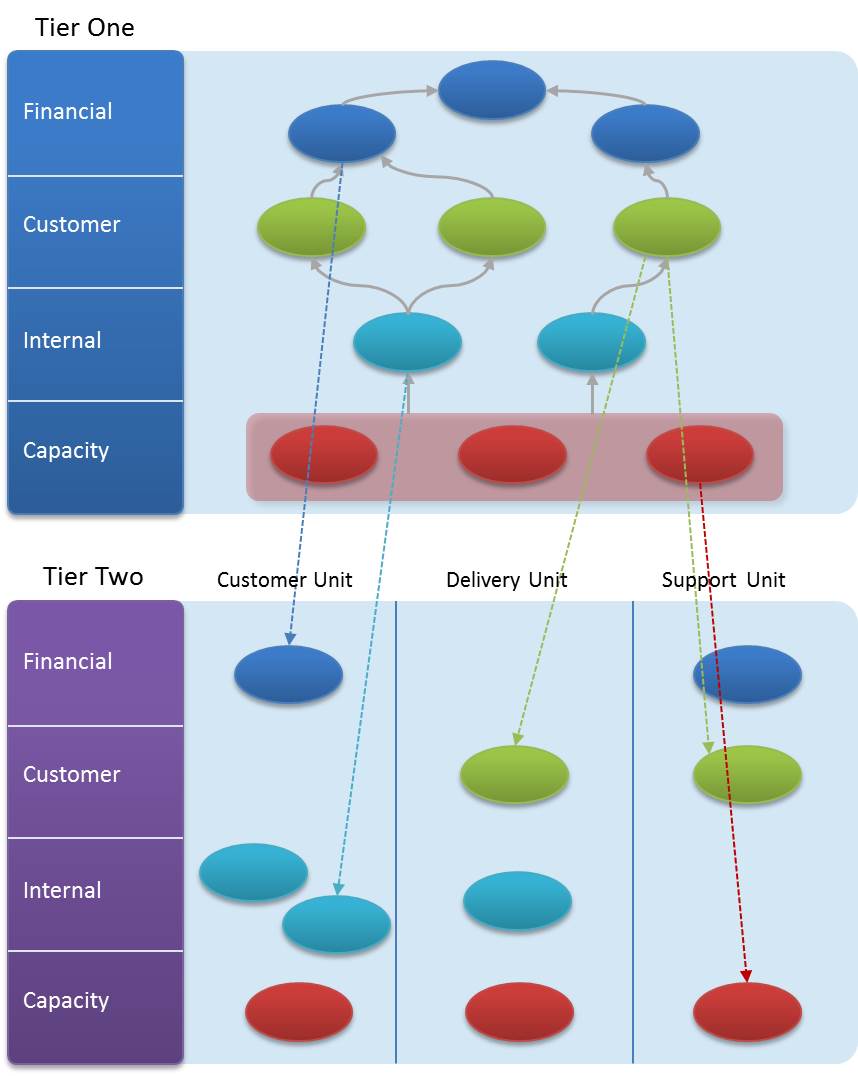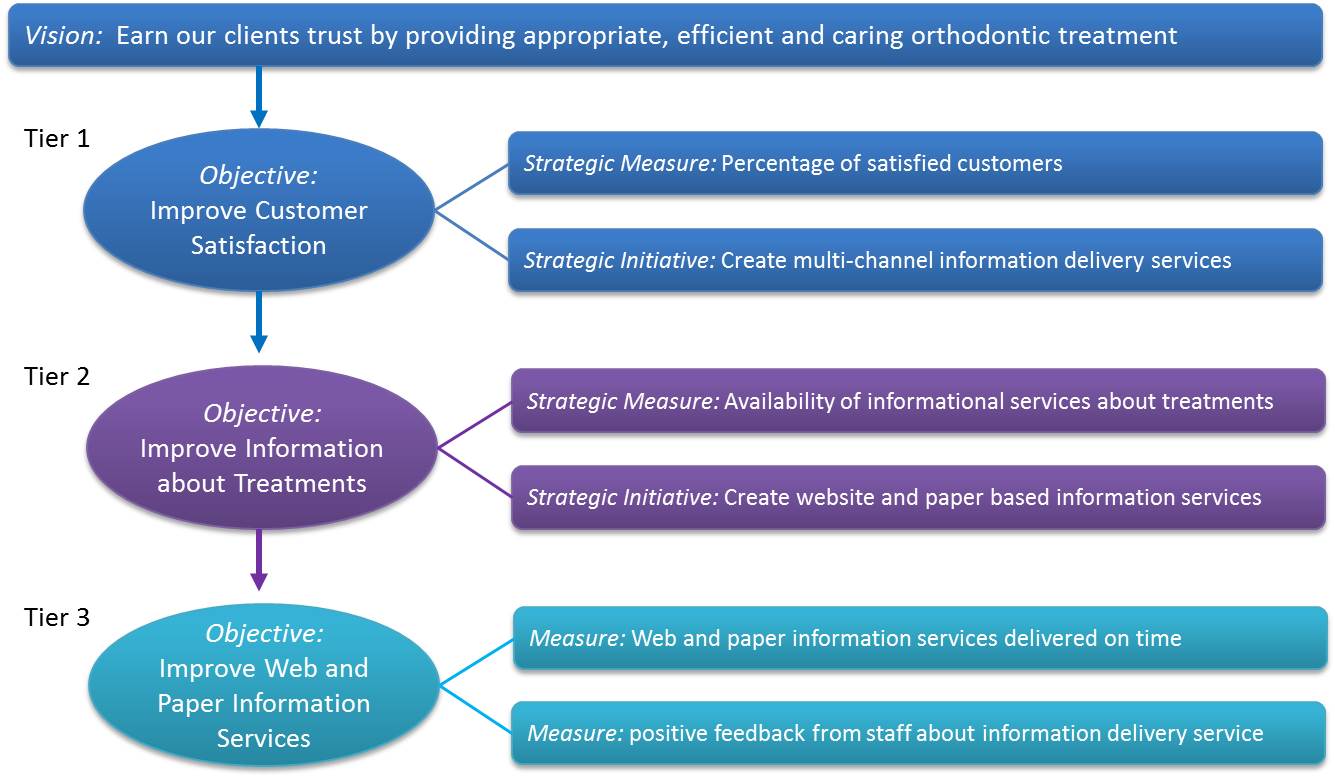Nine Steps to Success™ – Step 8 Alignment
Alignment is the eighth step of the Balanced Scorecard Institutes framework for strategic planning and management, the Nine Steps to Success™.
The importance of strategic alignment cannot be under-estimated. In its recent survey conducted by The Economist on behalf of PMI, “Why Good Strategies Fail” they state “61% of respondents acknowledge that their firms often struggle to bridge the gap between strategy formulation and its day-to-day implementation”, they go on to say the consequence of this is “Not surprisingly, companies that are poorly aligned with strategy also report weaker financial results than their peers.”
Organisations achieve success when all organisational structures, processes and support systems are aligned. Employees within an organisation need to know what the organisation is trying to accomplish and should be able to make decisions based on the organisational strategy related to its vision and mission.
Alignment, in the nine steps approach, divides an organisation into three tiers:
Tier 1 – The organisation as a whole, the top-most view encapsulating everything
Tier 2 – The business and support units, divisions, departments, regions or functions
Tier 3 – Individuals or in some cases teams (who are engaged in the same activity)
Tiers 1 and 3 are reasonably self-explanatory. Tier 2 can be a little more complex. It can be viewed in various ways. Tier 2 could be a basic organisational structure that follows existing business hierarchies. Or it could be a functional structure led by customer facing units supported by delivery and support units. Or it could be a geographical structure based on location. The point being, prior to any alignment activity, the alignment structure needs to be understood and agreed.
With the alignment structure determined, cascading teams can be created. The process to date will almost certainly have been undertaken at a Tier 1 / Executive level. There will have been representatives from Tier 2, but the job of selecting people to roll out the scorecards needs some thought. The alignment team should include people who can serve as evangelists and facilitators. They will need to be; capable of teaching, articulate and creative. Don’t forget, there is a good chance that Tier 2 and Tier 3 staff will not have had any view of the progress to date. Workshops will have to be put into place to get everyone on board.
Aligning Tier 2 to Tier 1
The first phase is to train and orient Tier 2. This is usually done by a representative from Tier 1 and involves meeting and workshops. The objective is to get the Tier 2 team up-to-speed with the work done to date and to help them understand the methodology. While it is important to ensure they understand the overall strategy, strategic results and strategic objectives, it is equally important to leave space for them to start thinking about their specific contribution. The Tier 2 unit will have its own purpose, especially if it is a support unit like finance or human resources, there will need to be unit-oriented objectives created and written using the units own language.
The starting point for all of the discussions is the Strategy Map. A Tier 2 unit will create its own strategy map based on the Tier 1 strategy map. The result will be that a) some objectives are taken directly and used as-is, b) some objectives will be taken and made more specific using the language of the Tier 2 unit and c) some objectives will be left for other Tier 2 units. This is best described through a diagram:
Alignment Tier 1 to Tier 2 – Intracocus
We can see from the above there are three Tier 2 units to which strategic objectives have been cascaded. (We should assume in this example there are more units included in this exercise but not shown). We can also see that five strategic objectives have been taken directly by the units, as denoted by the straight dotted arrows. The units have also created additional strategic objectives. From this diagram we cannot see if they are related and use the same language or if they have been added as new objectives specific to the unit, both are valid provided they relate to the overall vision and strategy.
The above approach purposefully concentrates on strategic objectives. Strategic objectives drive the other alignment activities, it is vitally important to get this stage right before moving on. Once a set of cascaded objectives is in place, then the same process as described in the previous steps of the Nine Steps to Success™ can be used to determine performance measures, targets and initiatives.
Aligning Tier 3 to Tier 2
The final alignment step will be to the individual (or in some cases, team) level. Tier 3 objectives are personal. They should relate to an individual’s personal goals and be tied into personal performance management and development. The balanced scorecard is NOT a replacement for personal performance management and development, it is an enhancement. It simply ensures that as well as undertaking day-to-day operational activities, an individual understands and is part of the organisations vision and strategy. How this translates can be described in the following example:
Alignment Tier 1 to Tier 2 to Tier 3 – Intrafocus
The above is a modified real life example. The vision is that of a group of dental surgeries where one of their strategic objectives was to improve customer satisfaction. In this instance, the dental practice had grown very quickly due to the good practices put in place by the owner. Soon the single surgery had become five and the owner had found that across the five surgeries, customer satisfaction was not as high as it had been in the past.
One of the Tier 2 units took the Improve Customer Satisfaction objective and created two supporting objectives, one of which was to Improve Information about Treatments. This was then taken by Tier 3, an individual, in this case the IT support person and translated into a personal objective to Improve web and paper information services. An interesting side note about this example is that the improved web and paper information service was them rolled out across all five surgeries providing a cumulative benefit.
In conclusion, alignment is of great importance as it allows an organisation to engage with employees at an individual level. It provides the means to gain buy-in and to give employees a sense of being part of the bigger picture, to know and understand what the organisation is trying to achieve. It is this that gives job satisfaction. Contrary to popular believe, there is a large body of research that demonstrates salary is not a driving factor.
In his book “Drive: The surprising truth about what motivates us” Daniel Pink demonstrates that salary is simply a “hygiene” factor. People want to be paid enough and not more. Interestingly pay-for-performance plans often have a negative impact. Pink found there were three things that motivate people, Autonomy, Mastery and Purpose. In these areas it is plain to see that employees will respond better when given clear objectives and measures where they can exercise their own judgement as to how to achieve the results.
Alignment is the eighth step in a strategic planning journey. The Nine Steps to Success™ is a strategic planning methodology created by the Balanced Scorecard Institute. For more information on how to be trained as a Balanced Scorecard Professional (BSP) visit our training pages on the website.




